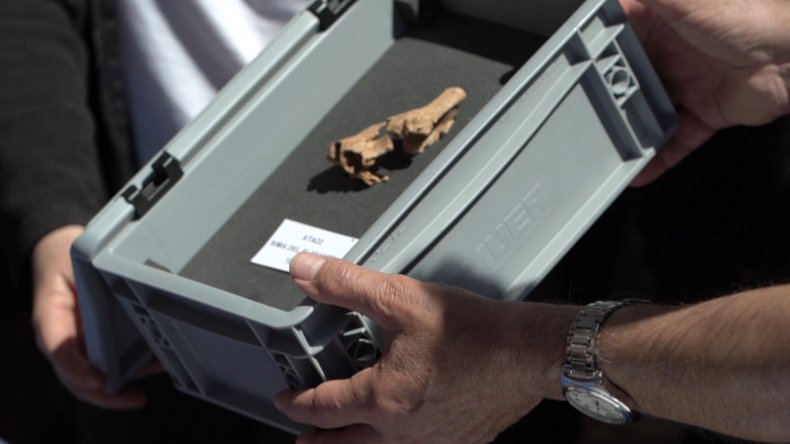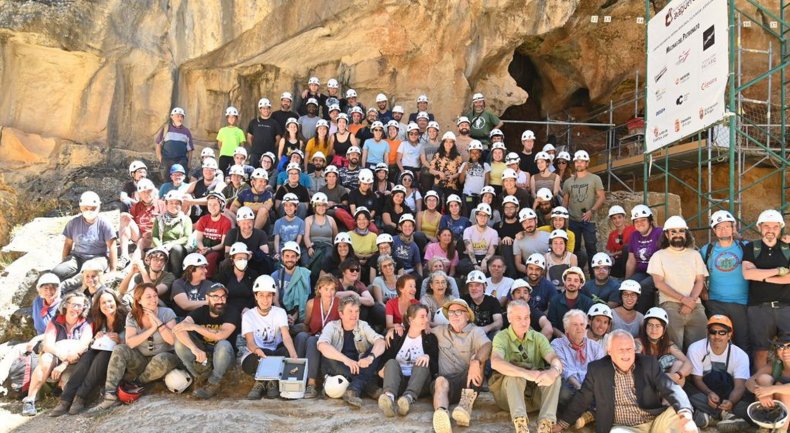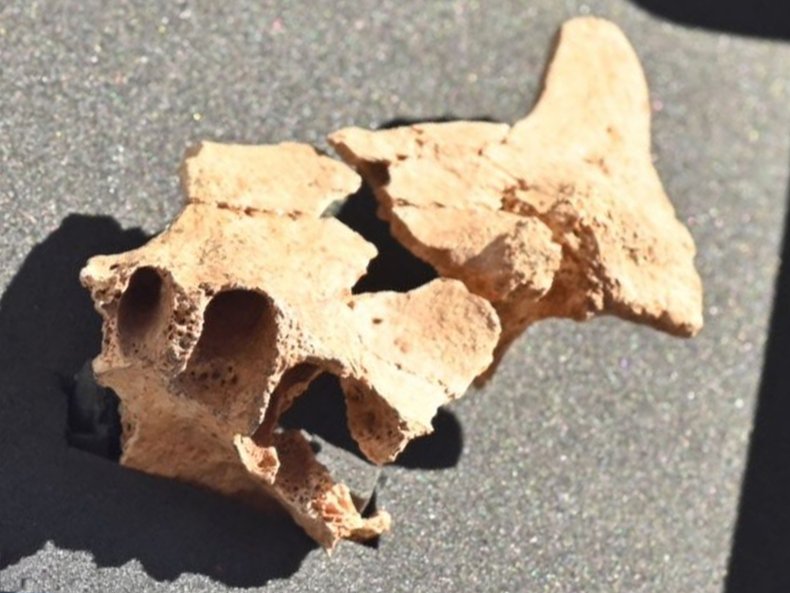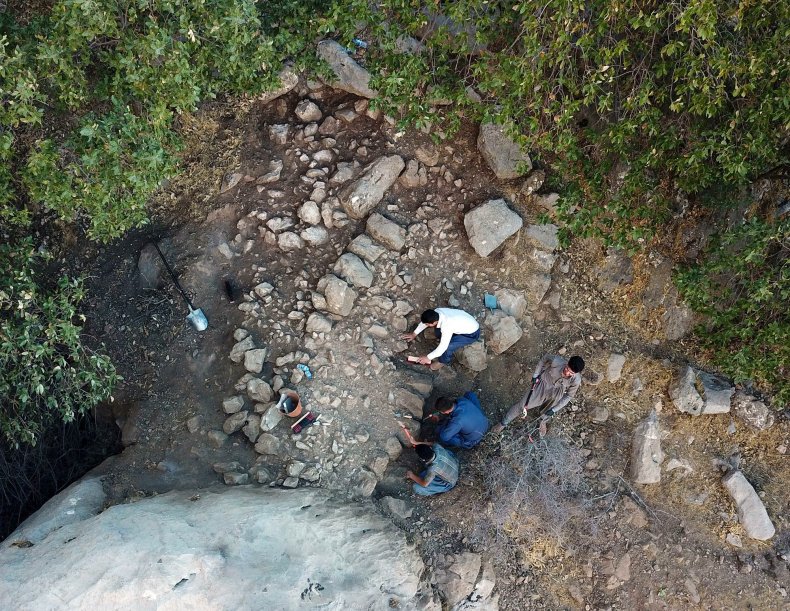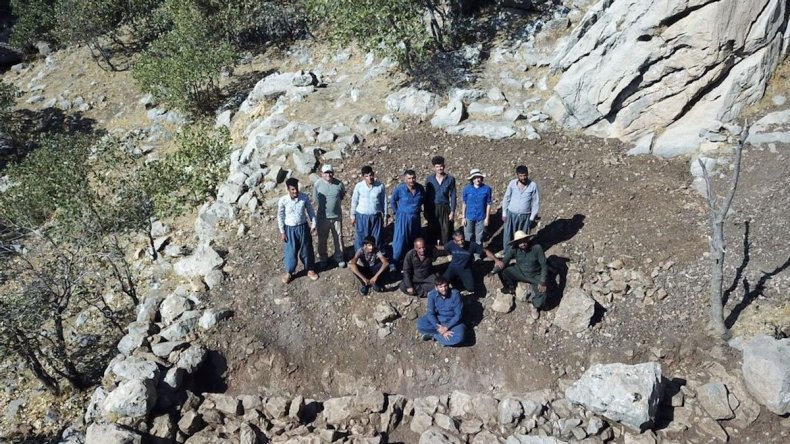MODERN RECYCLING
Deep pits on the moon may lead to caves, NASA says. Study uncovers startling detail
BY MARK PRICE JULY 28, 2022
Read more at: https://www.heraldonline.com/news/nation-world/national/article263918481.html#storylink=cpy
Spelunking on the moon: New study explores lunar pits and caves
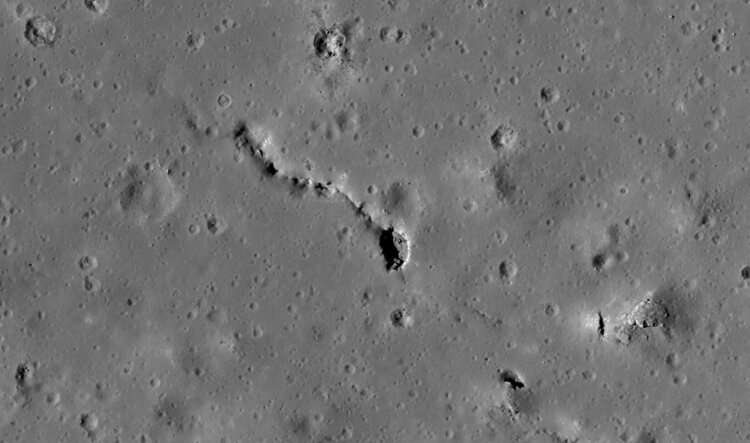
The moon may be a mostly uniform expanse of gray, but if you look closely, you can still find a few nooks and crannies in its surface, from deep trenches to pits and maybe even caves
Now, researchers at CU Boulder have set out to explore what the environment might be like inside some of these shadowy features—many of which are too dark to see clearly from orbit.
The team's preliminary results suggest that pits and caves on the moon showcase remarkably stable conditions. They don't seem to experience the wild swings in temperature that are common at the moon's surface, said Andrew Wilcoski, a graduate student in the Department of Astrophysical and Planetary Sciences at CU Boulder. He will present the group's initial findings Friday at the American Geophysical Union fall meeting in New Orleans.
"If we're hoping to send people into these caves in the decades ahead, we want to know what they should expect down there," said Wilcoski, a co-author of the new research.
The take-home message: What is it like to go spelunking on the moon?
Future lunar explorers may want to pay attention. Pits and caves, Wilcoski explained, are potentially ideal places for the space colonies of the future. Their walls and crevices are naturally homey and might protect humans from the sun's dangerous radiation. Some scientists have also wondered if lunar pits and caves could be rich in natural resources that astronauts covet. That includes ice, which explorers could mine to collect water for drinking, showers and even rocket fuel.
To find out for sure, Wilcoski and planetary scientist Paul Hayne drew on computer simulations to try to recreate the conditions below the moon's surface.
Their initial findings present a mixed bag: The stable environments of lunar pits and caves could help astronauts weather some of the moon's worst extremes. Those same conditions, however, may make them less-than-perfect spots to go looking for water.
"They're attractive options for establishing a long-term human presence on the moon," said Hayne, assistant professor in the Laboratory for Atmospheric and Space Physics at CU Boulder.
Pockmarked moon
Hayne added that no one knows how many pits and caves might be hiding on the moon. One scientific team that went searching for them in 2014 found more than 200. Many looked like round holes punched into the lunar surface, and they ranged from about a half a mile wide to the size of a London double-decker bus.
Scientists are excited about their potential in part because the moon itself is such an extreme environment.
"As you get close to the equator, temperatures can reach more than 100 degrees Celsius during the day on the surface, and it will get down to 170 degrees Celsius below zero at night," Wilcoski said.
The researchers developed simulations to track the temperatures in hypothetical lunar pits and caves of various shapes and sizes as the sun rose and set over the moon. They found that how these formations are oriented matters. If a cave's mouth points directly at the rising sun, for example, it will get a lot warmer than if it points away.
Just like caves on Earth, caves on the moon seemed to sustain relatively balmy environments. Most of the team's simulated caves hosted temperatures of about minus 120 to minus 70 degrees Celsius (minus 184 to minus 94 degrees Fahrenheit) throughout an entire lunar day.
Those aren't great conditions for water frozen into ice, Wilcoski said. Previous research by Hayne and other scientists has shown that water ice may have accumulated over billions of years in certain sites on the moon that researchers call "cold traps." But, based on results from the new simulations, many lunar pits and caves are probably too warm to harbor similar treasure troves. In other words, go somewhere else to fill up your Nalgene.
"One intriguing possibility would be to establish a protected base station inside a lunar pit or cave near one of the polar craters containing water ice," Hayne said. "Astronauts could then venture out when conditions were right in order to collect ice-rich soil."Carbon dioxide cold traps on the moon are confirmed for the first time
Provided by University of Colorado at Boulder
New Study Explores Lunar Pits And Caves

The moon may be a mostly uniform expanse of gray, but if you look closely, you can still find a few nooks and crannies in its surface, from deep trenches to pits and maybe even caves.
Now, researchers at CU Boulder have set out to explore what the environment might be like inside some of these shadowy features–many of which are too dark to see clearly from orbit.
The team’s preliminary results suggest that pits and caves on the moon showcase remarkably stable conditions. They don’t seem to experience the wild swings in temperature that are common at the moon’s surface, said Andrew Wilcoski, a graduate student in the Department of Astrophysical and Planetary Sciences at CU Boulder. He will present the group’s initial findings Friday at the American Geophysical Union fall meeting in New Orleans.
“If we’re hoping to send people into these caves in the decades ahead, we want to know what they should expect down there,” said Wilcoski, a co-author of the new research.
The take-home message: What is it like to go spelunking on the moon?
Future lunar explorers may want to pay attention. Pits and caves, Wilcoski explained, are potentially ideal places for the space colonies of the future. Their walls and crevices are naturally homey and might protect humans from the sun’s dangerous radiation. Some scientists have also wondered if lunar pits and caves could be rich in natural resources that astronauts covet. That includes ice, which explorers could mine to collect water for drinking, showers and even rocket fuel.
To find out for sure, Wilcoski and planetary scientist Paul Hayne drew on computer simulations to try to recreate the conditions below the moon’s surface.
Their initial findings present a mixed bag: The stable environments of lunar pits and caves could help astronauts weather some of the moon’s worst extremes. Those same conditions, however, may make them less-than-perfect spots to go looking for water.
“They’re attractive options for establishing a long-term human presence on the moon,” said Hayne, assistant professor in the Laboratory for Atmospheric and Space Physics at CU Boulder.
Hayne added that no one knows how many pits and caves might be hiding on the moon. One scientific team that went searching for them in 2014 found more than 200. Many looked like round holes punched into the lunar surface, and they ranged from about a half a mile wide to the size of a London double-decker bus.
Scientists are excited about their potential in part because the moon itself is such an extreme environment.
“As you get close to the equator, temperatures can reach more than 100 degrees Celsius during the day on the surface, and it will get down to 170 degrees Celsius below zero at night,” Wilcoski said.
The researchers developed simulations to track the temperatures in hypothetical lunar pits and caves of various shapes and sizes as the sun rose and set over the moon. They found that how these formations are oriented matters. If a cave’s mouth points directly at the rising sun, for example, it will get a lot warmer than if it points away.
Just like caves on Earth, caves on the moon seemed to sustain relatively balmy environments. Most of the team’s simulated caves hosted temperatures of about minus 120 to minus 70 degrees Celsius (minus 184 to minus 94 degrees Fahrenheit) throughout an entire lunar day.
Those aren’t great conditions for water frozen into ice, Wilcoski said. Previous research by Hayne and other scientists has shown that water ice may have accumulated over billions of years in certain sites on the moon that researchers call “cold traps.” But, based on results from the new simulations, many lunar pits and caves are probably too warm to harbor similar treasure troves. In other words, go somewhere else to fill up your Nalgene.
“One intriguing possibility would be to establish a protected base station inside a lunar pit or cave near one of the polar craters containing water ice,” Hayne said. “Astronauts could then venture out when conditions were right in order to collect ice-rich soil.”
Keith Cowing
SpaceRef co-founder, Explorers Club Fellow, ex-NASA, Away Teams, Journalist, Space & Astrobiology, Lapsed climber.
European Space Agency Plans Mission to Explore Caves on the Moon
By
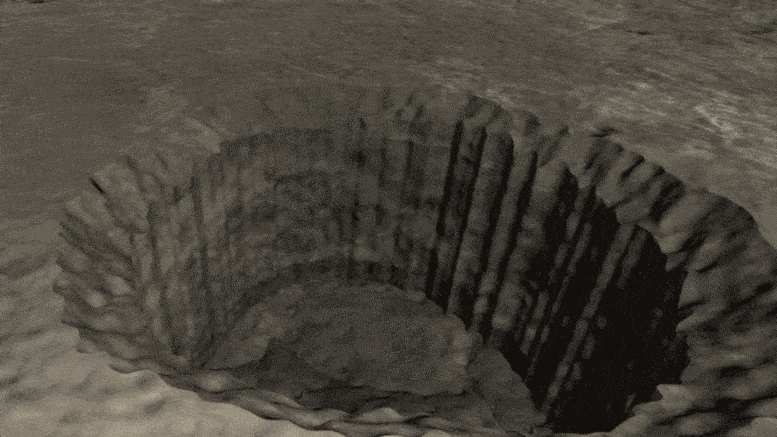
Entering a lunar lava tube. The Moon’s surface is covered by millions of craters, but it also hosts hundreds of very steep-walled holes known as pits. Like doorways to the underworld, photos of some pits clearly show a cavern beneath the Moon’s surface, suggesting that they are ‘skylights’ into extensive lava tubes that can be as wide as New York’s Central Park, and could extend for hundreds of kilometers. These tubes are thought to have formed during lava flows billions of years ago, when the Moon was still geologically active. Credit: Conor Marsh, University of Manchester
In a first step towards uncovering the Moon’s subterranean secrets, in 2019 ESA asked for your ideas to detect, map, and explore lunar caves. Five ideas were selected to be studied in more detail, each addressing different phases of a potential mission.
Through these five Sysnova studies, three mission scenarios were developed – one to perform a preliminary scout of entry pits and underground caves from the Moon’s surface, one to lower a probe into a pit and access the first part of a cave, and one to explore an underground lava tube using autonomous rovers.
“Although the studies were very different in topic and approach, they all provided great insight into potential technologies for exploring and investigating the geology of the Moon’s subsurface,” says Loredana Bessone, Technical Officer for the studies and Project Manager for ESA CAVES and PANGAEA, speaking soon after the results of the studies were presented. “It’s been a fascinating journey, and a great opportunity for ESA to start looking into missions to explore lunar caves.”

Three images of the Marius Hills pit on the Moon, imaged by NASA’s Lunar Reconnaissance Orbiter. This pit is about 34 metres deep and 65 by 90 metres wide. Marius Hills and other pits may be ‘skylights’ into extensive lava tubes. Credit: NASA/GSFC/Arizona State University
Bringing the ideas together with other ESA lunar exploration initiatives
As a combination that would give a maximum scientific return, teams behind two of the studies – one from the University of Würzburg and one from the University of Oviedo – were selected to take part in an ESA Concurrent Design Facility (CDF) study. Both focusing on the second mission scenario, the technologies that these teams have developed would allow a safe exploration and documentation of a lunar pit as well as a first peek inside the tunnels that a pit may lead to
Kicking off this week, the CDF study is integrating the results of the studies carried out by these two teams with plans for ESA’s European Large Logistics Lander (EL3) and Moonlight initiatives. Whilst EL3 is a lander designed to enable a series of ESA missions to the Moon, Moonlight aims to provide navigation and telecommunications capabilities for lunar exploration.

A prototype developed by the University of Würzburg of the Daedalus probe that would be lowered into a lunar cave using a tether. Credit: University of Würzburg
The University of Würzburg has been exploring the concept of lowering a probe using a tether to explore and characterize the entrance, walls and initial part of lunar lava tubes. These huge underground caverns are thought to have formed through lava flows billions of years ago.
Named Daedalus, the compact, spherical probe would be equipped with 3D lidar, stereo camera vision and an ability to move independently. By creating a 3D model of the inside of a lava tube, the probe could identify geological resources and seek out locations with stable radiation levels and temperature; this information could take us closer to building a human settlement on the Moon
The University of Oviedo, meanwhile, has investigated deploying a swarm of small robots inside a cave. Working together with the University of Vigo and Alén Space, the focus of their research has been on overcoming the lack of sunlight – and therefore solar power – inside a cave, as well as how to transmit data from the robots to a rover on the Moon’s surface.
The team’s solution is to use a crane to lower the robots into a lava tube. Equipped with a solar panel, the rover would supply energy to the robots through the crane using a ‘charging head’ attached to the bottom of the crane. Being in sight of the robots, the charging head would supply energy wirelessly, as well as transmitting and receiving data.

An overview of the University of Oviedo’s idea, where a charging head (CH) attached to the end of a crane can communicate with the underground rovers – cave elements (CEs) – using WiFi. Credit: University of Oviedo
Looking at the big picture and the small details
Continuing the research, the CDF study will design a lunar caves mission lasting one lunar day (14 Earth days), starting from the deployment of EL3. Focusing on the second mission scenario, the CDF study will also specify the individual subsystems of such a mission and ensure that they would all be able to work together.
“The CDF study will investigate details such as the energy requirements of the mission, the path that could be taken from the landing site to the pit rim, and the power and data budgets for descending into and mapping the pit,” explains Francesco Sauro, cave scientist, and planetary lava tube expert, as well as technical course director of ESA CAVES and PANGAEA. “It will also look at the interfaces between the rover and the robotic crane, as well as the crane and the Daedalus probe.”

Artist’s impression of the European Large Logistics Lander (EL3) unloading cargo. This cargo could include a mission to explore lunar caves. Credit: ESA/ATG-Medialab
“Overall, the Sysnova and CDF studies are helping ESA to identify interesting technologies and develop roadmaps for the future. They are supporting the Agency to assess the feasibility of novel concepts for future missions.”
Whilst the Moon’s surface has been well documented by orbital spacecraft, it hides an underground world that remains a mystery. The shelter that lunar caves provide, as well as the access to water and other resources, could be vital for our future human or robotic exploration of the Moon. This makes these Sysnova studies – and the ensuing CDF study – a major step forward in achieving a lunar mission.
Discover more about each Sysnova study
The following videos, as well as the articles at the end of this page, were put together by the Sysnova study teams.
Rover-based system for scouting and mapping lava tubes from the Moon’s surface using gravimetric surveying – Canadensys (mission scenario one)
Hopping rovers for lunar exploration – the University of Manchester (mission scenario one)
Robotic crane for wireless power and data transmission between surface and cave – University of Oviedo (mission scenario two)
Descent and exploration in deep autonomy of lava underground structures – University of Würzburg (mission scenario two)
Skylight: A tethered micro-rover for safe semi-autonomous exploration of lava tubes – DFKI (mission scenario three)
NASA Considers a Rover Mission to Go Cave Diving on the Moon
The deep caverns and pits that dot the lunar surface could hold clues to the moon’s history and perhaps provide shelter for future human exploration
David W. Brown
/https://tf-cmsv2-smithsonianmag-media.s3.amazonaws.com/filer/2e/f5/2ef571fd-d48d-43be-a6b3-5944985468bf/earthshine_bigger2.jpg)
Half a century after Neil Armstrong and Buzz Aldrin took their first steps across the moon’s Mare Tranquillitatis, or the Sea of Tranquility, scientists want to send a robotic explorer to the same lunar region for a deeper dive. An extreme-terrain rover concept called Moon Diver, to launch in the mid-2020s if approved by NASA, would descend into one of the enormous pits dotting the surface of the moon. The walls of the cave under consideration for the spelunking spacecraft are about 130 feet deep, followed by another 200 feet of freefall into a deep, dark, mysterious maw beneath the lunar surface.
“There is a nice poetry to this mission concept,” says Laura Kerber, a research scientist at NASA’s Jet Propulsion Laboratory and the Moon Diver mission concept principal investigator. “Apollo 11 landed along the edge of the Sea of Tranquility. Fifty years later, we are going to dive down right into the middle of it.”
Scientists at the 50th Lunar and Planetary Science Conference (LPSC) in Texas on March 20 presented plans for Moon Diver, designed to rappel hundreds of feet down into large pits on the moon’s surface. During descent, science instruments in the rover’s wheel wells would unfold and study the ancient moon by way of its exposed stratigraphy—the layers of rock hidden below the surface.
There are over a dozen deep pits known on the moon, all located in its mare—the lava-covered parts of the lunar surface that have cooled into dark, basaltic plains. Some of these pits are as wide as a football field and big enough to swallow entire buildings. They formed as voids in the lunar subsurface whose ceilings eventually collapsed, creating cavernous openings. These cavities expose fresh cuts of rock that are of particular interest to planetary geologists—slices of the moon’s rock record that have been largely unaltered for billions of years

A spelunking Moon Diver rover could reveal the types, fluxes and timescales of ancient lava eruptions on the moon. The rover could discover what sort of lava flowed, how much erupted, its speed and intensity. By studying lunar lava, planetary scientists can work out whether the volcanic activity was robust enough to give the moon a Mars-like atmosphere in the distant past. More information about the moon’s eruptions could also help elucidate the catastrophic effects volcanoes have had on the climate of Mars.
Scientists are also interested in lunar caverns because they could provide shelter for future equipment or even crewed research centers. Below the moon’s surface, astronauts would be shielded from radiation, micrometeorites, the harmful effects of lunar dust and the dramatic temperature swings between lunar night and day. But before anyone could start building a subterranean moon base, scientists need to get a better sense of what lurks below the lunar maria.
Moon Diver would touch down within a few hundred feet of its target pit and act as an anchor for a simple two-wheeled rover called Axel. Unlike any other rover landed on another world, Axel would not require a ramp to roll off of its lander element; it was designed to rappel down things. A tether to the rover would provide it with power and communications as it descends.
Axel would carry multiple instrument payloads to survey a lunar cavern, including a stereo pair of cameras for close imaging of the walls and a long-distance camera to look across at the opposite side of the pit. A multispectral microscope would detail the mineralogy of the cavern, while an alpha particle x-ray spectrometer would study the elemental chemistry of the rock features.
The outer geometry of the target pit in the Sea of Tranquility is shaped like a funnel, and the rover would roll down the staircase-like walls. As terrain grows increasingly rough, Axel could operate the way a human rappeler might descend: swinging and tapping against the walls. Where it touches, the science instruments could deploy and collect data, and during the wall-less, 200-foot rappel, the rover could take images of its surroundings while dangling helplessly as it is lowered with the tether.
Once it reaches the bottom of the pit, Kerber says, Axel would explore the cavern floor, providing humanity’s first close look at the subterranean realms of the moon. The rover would carry six times as much tether as it needs, so however far the bottom of the cavern is, Axel should be able to descend deeply enough to discover what waits below.
“The bottom of the pit is total exploration. We have enough time to just see what the heck is down there. We are thinking a monolith,” Kerber jokes, “or a big door covered in hieroglyphics.”
Moon Diver will be competing for selection as part of NASA’s low-cost, Discovery-class mission program. If chosen, the mission would launch for the moon around 2025. Competing proposals presented at LPSC include a mission to Triton, the largest moon of Neptune, and one to Io, the volcanic satellite of Jupiter.
As part of its long-term goal of lunar exploration, NASA plans to construct a lunar outpost in orbit around the moon and to use the station as stepping stone for crewed missions to the surface. But before astronauts return, a little two-wheeled rover could scout out the deep lunar pits to see if humanity’s future on the moon resides in the caverns below.
David W. Brown | | READ MORE
David W. Brown is the author of One Inch From Earth (Custom House, 2020), about a group of scientists who studied Europa, needed to know more, and spent twenty years convincing NASA to mount a flagship mission there. His work also appears in the New York Times, Scientific American and the Atlantic.
Lunar Pits Could Shelter Astronauts, Reveal Details of How 'Man in the Moon' Formed
While the moon's surface is battered by millions of craters, it also has over 200 holes – steep-walled pits that in some cases might lead to caves that future astronauts could explore and use for shelter, according to new observations from NASA's Lunar Reconnaissance Orbiter (LRO) spacecraft.
This video shows images from NASA's LRO spacecraft of various lunar pits.Credits: NASA's Goddard Space Flight Center/D. GallagherThe pits range in size from about 5 meters (~5 yards) across to more than 900 meters (~984 yards) in diameter, and three of them were first identified using images from the Japanese Kaguya spacecraft. Hundreds more were found using a new computer algorithm that automatically scanned thousands of high-resolution images of the lunar surface from LRO's Narrow Angle Camera (NAC).
This is a spectacular high-Sun view of the Mare Tranquillitatis pit crater revealing boulders on an otherwise smooth floor. This image from LRO's NAC is 400 meters (1,312 feet) wide, north is up.Credits: NASA/Goddard/Arizona State University"Pits would be useful in a support role for human activity on the lunar surface," said Robert Wagner of Arizona State University, Tempe, Arizona. "A habitat placed in a pit -- ideally several dozen meters back under an overhang -- would provide a very safe location for astronauts: no radiation, no micrometeorites, possibly very little dust, and no wild day-night temperature swings." Wagner developed the computer algorithm, and is lead author of a paper on this research now available online in the journal Icarus.
Most pits were found either in large craters with impact melt ponds – areas of lava that formed from the heat of the impact and later solidified, or in the lunar maria – dark areas on the moon that are extensive solidified lava flows hundreds of miles across. In ancient times, the maria were thought to be oceans; "maria" is the Latin word for "seas." Various cultures have interpreted the patterns formed by the maria features in different ways; for example, some saw the face of a man, while others saw a rabbit or a boy carrying a bundle of sticks on his back.
The pits could form when the roof of a void or cave collapses, perhaps from the vibrations generated by a nearby meteorite impact, according to Wagner. However, he noted that from their appearance in the LRO photos alone, there is little evidence to point to any particular cause. The voids could be created when molten rock flowed under the lunar surface; on Earth, lava tubes form when magma flows beneath a solidified crust and later drains away. The same process could happen on the moon, especially in a large impact crater, the interior of which can take hundreds of thousands of years to cool, according to Wagner. After an impact crater forms, the sides slump under lunar gravity, pushing up the crater's floor and perhaps causing magma to flow under the surface, forming voids in places where it drains away.
Exploring impact melt pits would pin down the nature of the voids in which they form. "They are likely due to melt flow within the pond from uplift after the surface has solidified, but before the interior has cooled," said Wagner. "Exploring impact melt pits would help determine the magnitude of this uplift, and the amount of melt flow after the pond is in place."
Exploring the pits could also reveal how oceans of lava formed the lunar maria. "The mare pits in particular would be very useful for understanding how the lunar maria formed. We've taken images from orbit looking at the walls of these pits, which show that they cut through dozens of layers, confirming that the maria formed from lots of thin flows, rather than a few big ones. Ground-level exploration could determine the ages of these layers, and might even find solar wind particles that were trapped in the lunar surface billions of years ago," said Wagner.
To date, the team has found over 200 pits spread across the melt ponds of 29 craters, which are considered geologically young "Copernican" craters at less than a billion years old; eight pits in the lunar maria, three of which were previously known from images from the Japanese Kaguya orbiter; and two pits in highlands terrain.
The general age sequence matches well with the pit distributions, according to Wagner. "Impact melt ponds of Copernican craters are some of the younger terrains on the moon, and while the maria are much older at around three billion years old, they are still younger and less battered than the highlands. It's possible that there's a 'sweet spot' age for pits, where enough impacts have occurred to create a lot of pits, but not enough to destroy them," said Wagner.
There are almost certainly more pits out there, given that LRO has only imaged about 40 percent of the moon with appropriate lighting for the automated pit searching program, according to Wagner. He expects there may be at least two to three more mare pits and several dozen to over a hundred more impact melt pits, not including any pits that likely exist in already-imaged areas, but are too small to conclusively identify even with the NAC's resolution.
"We'll continue scanning NAC images for pits as they come down from the spacecraft, but for about 25 percent of the moon's surface area (near the poles) the sun never rises high enough for our algorithm to work," said Wagner. "These areas will require an improved search algorithm, and even that may not work at very high latitudes, where even a human has trouble telling a pit from an impact crater."
The next step would be to tie together more datasets such as composition maps, thermal measurements, gravity measurements, etc., to gain a better understanding of the environments in which these pits form, both at and below the surface, according to Wagner.
"The ideal follow-up, of course, would be to drop probes into one or two of these pits, and get a really good look at what's down there," adds Wagner. "Pits, by their nature, cannot be explored very well from orbit -- the lower walls and any floor-level caves simply cannot be seen from a good angle. Even a few pictures from ground-level would answer a lot of the outstanding questions about the nature of the voids that the pits collapsed into. We're currently in the very early design phases of a mission concept to do exactly this, exploring one of the largest mare pits."
The research was funded by NASA's LRO project. Launched on June 18, 2009, LRO has collected a treasure trove of data with its seven powerful instruments, making an invaluable contribution to our knowledge about the moon. LRO is managed by NASA's Goddard Space Flight Center in Greenbelt, Maryland, for the Science Mission Directorate at NASA Headquarters in Washington.
Related Link
Bill Steigerwald
NASA's Goddard Space Flight Center, Greenbelt, Maryland
Last Updated: Aug 7, 2017Editor: Bill Steigerwald
While the moon's surface is battered by millions of craters, it also has over 200 holes – steep-walled pits that in some cases might lead to caves that future astronauts could explore and use for shelter, according to new observations from NASA's Lunar Reconnaissance Orbiter (LRO) spacecraft.
The pits range in size from about 5 meters (~5 yards) across to more than 900 meters (~984 yards) in diameter, and three of them were first identified using images from the Japanese Kaguya spacecraft. Hundreds more were found using a new computer algorithm that automatically scanned thousands of high-resolution images of the lunar surface from LRO's Narrow Angle Camera (NAC).
"Pits would be useful in a support role for human activity on the lunar surface," said Robert Wagner of Arizona State University, Tempe, Arizona. "A habitat placed in a pit -- ideally several dozen meters back under an overhang -- would provide a very safe location for astronauts: no radiation, no micrometeorites, possibly very little dust, and no wild day-night temperature swings." Wagner developed the computer algorithm, and is lead author of a paper on this research now available online in the journal Icarus.
Most pits were found either in large craters with impact melt ponds – areas of lava that formed from the heat of the impact and later solidified, or in the lunar maria – dark areas on the moon that are extensive solidified lava flows hundreds of miles across. In ancient times, the maria were thought to be oceans; "maria" is the Latin word for "seas." Various cultures have interpreted the patterns formed by the maria features in different ways; for example, some saw the face of a man, while others saw a rabbit or a boy carrying a bundle of sticks on his back.
The pits could form when the roof of a void or cave collapses, perhaps from the vibrations generated by a nearby meteorite impact, according to Wagner. However, he noted that from their appearance in the LRO photos alone, there is little evidence to point to any particular cause. The voids could be created when molten rock flowed under the lunar surface; on Earth, lava tubes form when magma flows beneath a solidified crust and later drains away. The same process could happen on the moon, especially in a large impact crater, the interior of which can take hundreds of thousands of years to cool, according to Wagner. After an impact crater forms, the sides slump under lunar gravity, pushing up the crater's floor and perhaps causing magma to flow under the surface, forming voids in places where it drains away.
Exploring impact melt pits would pin down the nature of the voids in which they form. "They are likely due to melt flow within the pond from uplift after the surface has solidified, but before the interior has cooled," said Wagner. "Exploring impact melt pits would help determine the magnitude of this uplift, and the amount of melt flow after the pond is in place."
Exploring the pits could also reveal how oceans of lava formed the lunar maria. "The mare pits in particular would be very useful for understanding how the lunar maria formed. We've taken images from orbit looking at the walls of these pits, which show that they cut through dozens of layers, confirming that the maria formed from lots of thin flows, rather than a few big ones. Ground-level exploration could determine the ages of these layers, and might even find solar wind particles that were trapped in the lunar surface billions of years ago," said Wagner.
To date, the team has found over 200 pits spread across the melt ponds of 29 craters, which are considered geologically young "Copernican" craters at less than a billion years old; eight pits in the lunar maria, three of which were previously known from images from the Japanese Kaguya orbiter; and two pits in highlands terrain.
The general age sequence matches well with the pit distributions, according to Wagner. "Impact melt ponds of Copernican craters are some of the younger terrains on the moon, and while the maria are much older at around three billion years old, they are still younger and less battered than the highlands. It's possible that there's a 'sweet spot' age for pits, where enough impacts have occurred to create a lot of pits, but not enough to destroy them," said Wagner.
There are almost certainly more pits out there, given that LRO has only imaged about 40 percent of the moon with appropriate lighting for the automated pit searching program, according to Wagner. He expects there may be at least two to three more mare pits and several dozen to over a hundred more impact melt pits, not including any pits that likely exist in already-imaged areas, but are too small to conclusively identify even with the NAC's resolution.
"We'll continue scanning NAC images for pits as they come down from the spacecraft, but for about 25 percent of the moon's surface area (near the poles) the sun never rises high enough for our algorithm to work," said Wagner. "These areas will require an improved search algorithm, and even that may not work at very high latitudes, where even a human has trouble telling a pit from an impact crater."
The next step would be to tie together more datasets such as composition maps, thermal measurements, gravity measurements, etc., to gain a better understanding of the environments in which these pits form, both at and below the surface, according to Wagner.
"The ideal follow-up, of course, would be to drop probes into one or two of these pits, and get a really good look at what's down there," adds Wagner. "Pits, by their nature, cannot be explored very well from orbit -- the lower walls and any floor-level caves simply cannot be seen from a good angle. Even a few pictures from ground-level would answer a lot of the outstanding questions about the nature of the voids that the pits collapsed into. We're currently in the very early design phases of a mission concept to do exactly this, exploring one of the largest mare pits."
The research was funded by NASA's LRO project. Launched on June 18, 2009, LRO has collected a treasure trove of data with its seven powerful instruments, making an invaluable contribution to our knowledge about the moon. LRO is managed by NASA's Goddard Space Flight Center in Greenbelt, Maryland, for the Science Mission Directorate at NASA Headquarters in Washington.
Related Link
Bill Steigerwald
NASA's Goddard Space Flight Center, Greenbelt, Maryland




